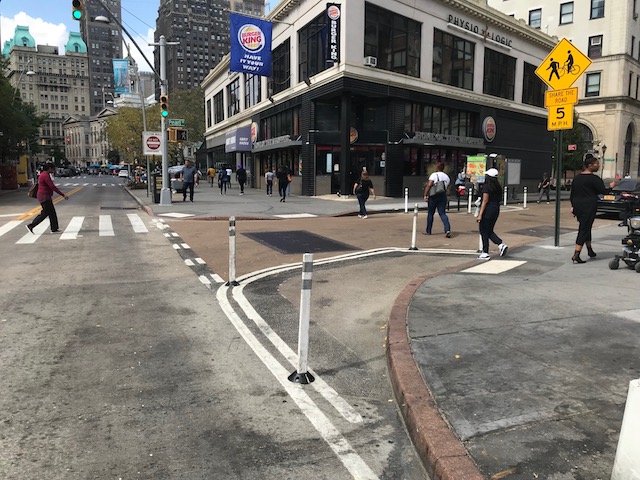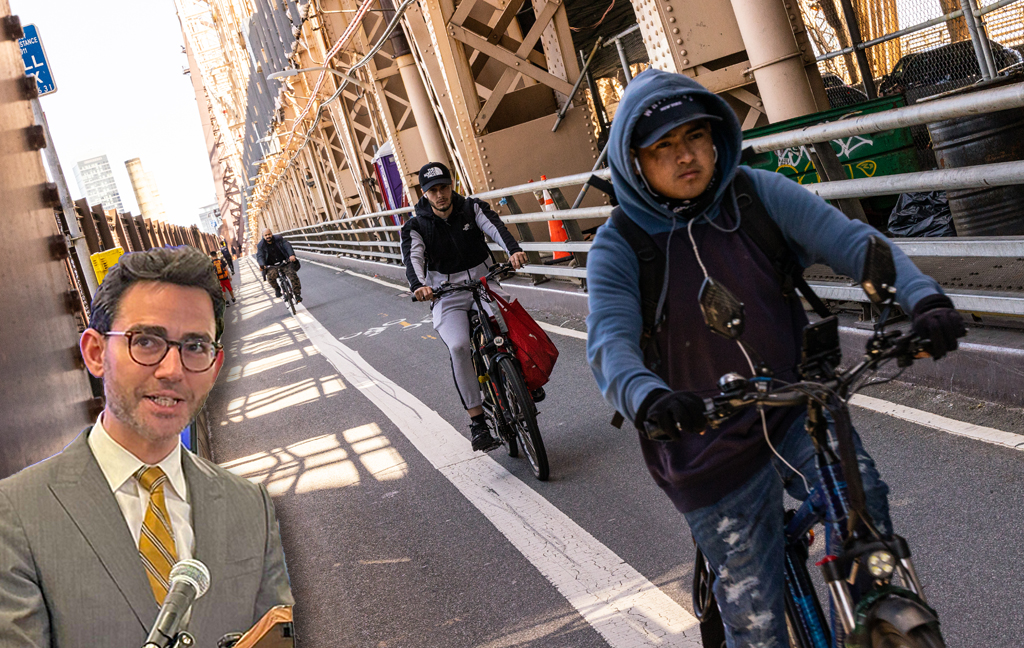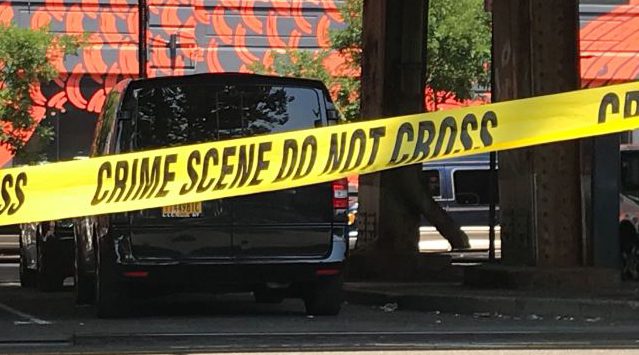Street Plans public-space aficionado Ed Janoff took issue with Streetsblog's less-than-laudatory coverage last week of the new shared streets in Downtown Brooklyn. Below, he argues that they are the first shoots of a flowering of pedestrianism that should be encouraged, not mocked.
Streetsblog’s story failed to capture important positive aspects of the project and others like it: They represent a culture shift in the thinking of traffic engineers and an application of “Tactical Urbanism” that could lead to much larger projects.
Important efforts like this one can sometimes underwhelm if you just look at what Streetsblog has called the "disappointing" results on the ground, but they are part of trends that are well worth amplifying.

Look at the history: New York's shared-street program began with a pilot at Broadway between 24th and 25th streets in 2017, a project I helped guide and implement while at Madison Square Park Conservancy. Many neighborhood stakeholders were skeptical of that installation and pushed back — with the usual complaints that traffic would be gridlocked, someone would get run over, and that “New York is not Amsterdam.” But, of course, no serious crisis came to pass.
Instead, the project effectively tripled the walkable public space around Worth Square and created a viable precedent for this year's shared-street projects at Willoughby Street and University Place in Manhattan.
These projects have some significant implications:
- They remove 50 percent to 100 percent of the on-street parking on these street segments, replacing them with vehicle-loading zones, bike parking, Citi Bike stations, and more pedestrian space. That this can occur without an angry mob of residents and businesses storming the street with torches and pitchforks is a monumental accomplishment in itself, and speaks volumes about the culture shift taking place in how curb space should be allocated. Although the sidewalk and roadway are still grade-separated where the existing curbs are left in place (those would require a multi-year, multi-million-dollar reconstruction project to change), the street operation has undergone a seismic shift.
- By covering the roadway with a gravel surface and posting "Share the Road" signs, the Department of Transportation is communicating that the whole space between buildings is for walking. Vehicles are now guests in a pedestrian environment — rather than the other way around. This can be a difficult design for traffic engineers to accept, so it's not surprising that DOT is proceeding cautiously and incrementally.
- At Willoughby Street, in particular, the shared-street project signifies the iterative evolution of the pedestrianization of Downtown Brooklyn using the tactical urbanism playbook.
Willoughby Street at Pearl Street was the site of the first DOT plaza back in 2006, followed by DUMBO and Chelsea in 2007, Flatiron in 2008, Times Square and many more in 2009, and ten years later over 75 sites citywide. Willoughby Plaza was made permanent through a capital reconstruction that finished in 2013. Then, right on the heels of that, DOT commissioned a study on further pedestrianization, which made the case for the shared-street pilot project launched this year. Plan, test, iterate, repeat!
The subtext here is that DOT traffic planners are experimenting with an operational toolkit that could be expanded massively.
Just as the funky 2006 plaza at Willoughby Street inspired the launch of the citywide NYC Plaza Program in 2007, these shared-street prototypes are laying the groundwork for potentially much bigger moves down the road, such as Barcelona-style superblocks, Dutch-style living streets, pedestrianization of Lower Manhattan, or a closure of Broadway from Columbus Circle to Union Square.
Streetsblog’s coverage in June of the debut of the University Place shared street began with the lament, "one measly block." That misses the point: These projects are great and deserve to be expanded, so let's all push for more of them in more places and hope that DOT will be empowered to act on the foundation of these successful pilots.
Ed Janoff is senior director of project development at Street Plans.






